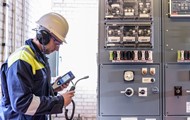Blog: When, Why and How to Monitor at Low Voltage
-
29 October 2020

Low voltage (LV) network visibility and Distributed Energy Resources (DER)
There are many challenges in the mission to improve customer service on our ageing low-voltage networks, not least the introduction of large amounts of small-scale, embedded generation at LV level. We take a look at when, why and how to monitor at low voltage to keep the lights on, now and in the future…
In answer to when to monitor at low voltage, the answer has to be now, for the simple reason that low voltage is the area most affected by the implementation of renewable energy. DERs such as distributed solar photovoltaic (DPV), distributed storage and use of electric vehicles (EVs) are all having a significant impact.
Added to the immediate demands of integrating DER, providing customers with choices and ensuring equitable benefits, mean that harnessing the potential of the LV network is not optional. LV monitoring is now a priority, and the days of tolerating a data blind spot have to end.
So, what exactly is the impact of the growth in DER on the network? Well, it results in more active networks, characterised by bi-directional power flow, variable voltage profiles and less predictable, increased loads and fault current levels. DERs can create unpredictable reverse power flows and localised voltage issues, so it is important to understand demand profiles – especially unpredictable or unusual spikes.
This presents electricity companies with many challenges, as active networks have different dynamics from traditional, passive networks. That means they need different information, planning and management processes to keep the quality of supply going. It’s worth noting that DER uptake may not necessarily lead to a network problem, so an approach which monitors first rather than intervenes first seems justified. Essentially, monitoring can lead to a more cost-effective, targeted approach to maintaining the network efficiently.
The benefits of LV monitoring
Drilling down into the data below the substation level can bring important insights with valuable benefits. For a start, understanding network performance makes management much easier, improving both service and safety. With the right data at hand, it is possible to make informed operational decisions, address quality issues and reduce the losses through improved power quality.
Planning ahead, the information gleaned can be used to accurately estimate what the capacity is for connecting DER to network, as well as helping to manage any resulting power-quality problems as DER penetration increases.
Looking further to the future, with solid data from LV monitoring available, forecasting likely LV network behaviour in the future when there are many unknowns and variables becomes easier; and a more creative approach can be taken in looking at the alternatives to expensive LV network reinforcement, such as intelligent automation and fault restoration on low voltage assets.
LV monitoring might seem like a niche area but there is consumer appetite for understanding such data, as our OpenLV project showed as far back as 2016 – you can read more about that here.
How LV monitoring works
Simply explained, sensors collect basic data such as current and voltage, and translate these into actionable information which can be then be crunched by a data centre. Daily profiles can be used to spot and plan for pinch points and energy losses while maintaining voltage to meet statutory requirements.
The potential is far greater than simply providing a window on how the LV network is operating though. Beyond monitoring, the most technically advanced next-generation systems can be used for network automation and managing faults safely, creating an intelligent network.
Systems are now available that establish the communication infrastructure needed to understand the LV network. Such smart systems can address the growing stresses on LV networks caused by the integration of DERs, including the rise in voltage and the decrease in the operational demand. Intelligent systems can automate capacity sharing between substations and reconfigure the network remotely. They can also be configured to synchronise with established high-voltage automation systems, with massive potential to move towards smart-grid aspirations.
Time to monitor LV
Real-time information regarding the low-voltage network performance can have a huge impact, helping to unlock the full potential of DER. Looking to the future, LV monitoring also holds the key to developing approaches to estimate future loads and capacity headroom, which has to be a key priority.
For more LV Monitoring resources and products:

